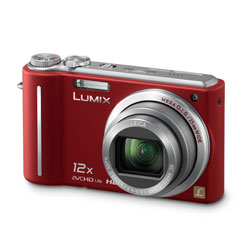The best compact megazoom cameras


I've loved the enthusiast site's series of "Group Tests" since the first one on sub $150 budget cameras came out in December, because they provide a vehicle for the site to review lower-end models (such as point-and-shoots) that they don't usually dedicate full reviews to. While the typical in-depth review at DPReview can be 20 pages or more, each of the six cameras in the megazoom group test gets a dedicated page plus the group comparison discussions on movie modes, image stabilization tests, as well as four studio comparison pages and two real-world comparison pages. It's a great way to get a perspective on the competitive group, backed up by expert lab-based testing.
So which megazooms came out on top? They list my fave, the Panasonic Lumix DMC-ZS3 in a tie for first place with its junior sibling, the DMC-ZS1, based on versatility of their 12x zoom ranges (from a wide-angle 25mm to 300mm equivalent), as well as good all-around performance and image quality. Unfortunately, they don't really say much about my big question: how does the ZS1's smaller, lower resolution screen compare to the ZS3's excellent 3-inch, 460,000-dot LCD. The only mention of this key difference between the two cameras is buried in the overall group test conclusion (which merely states the ZS3's screen is much better than the ZS1's, without any qualitative discussion).
The Sony Cyber-shot H20 was actually the only camera to score among the "Best of the bunch" for all three image-quality tests (outdoors/daylight, lowlight/high ISO, and performance/flash), but it didn't get top billing because of its lack of wide-angle lens and a less flexible user interface.
Don't-buy-it cameras? Only the extra compact Olympus Stylus 9000 gets the thumbs down here for the worst image quality, clunky user interface, and scratch-prone surface.
Read the full round-up here or cut to the chase on the conclusions and ratings page.